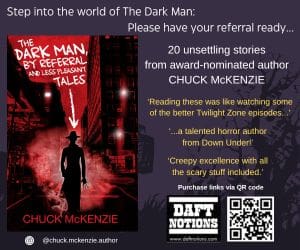
 Selene – Welcome to The Horror Tree, and thanks for taking the time to answer some questions! First, tell us a bit about yourself.
Selene – Welcome to The Horror Tree, and thanks for taking the time to answer some questions! First, tell us a bit about yourself.
Rob – Well, I’m a father, writer, editor, and small town postal carrier—in that order. I grew up (and still live) in Salem, Massachusetts, where, back in 1972, my mom taught her imaginative, energetic, three-year-old son to read in order to give him something to do. I’ve loved stories ever since.
Selene – How long have you been writing, and what about horror draws you?
Rob – I’ve only been writing for about ten years—and I say only because unlike a lot of people I know who’ve been doing this their whole lives, that means I started at forty. As for why horror? I’m not sure. It might be that we write what we know, and deep down I’m just a fearful person. I tend to read eclectically, with fantasy, sci-fi, police/legal thrillers, mysteries and more in both my read and TBR piles, and not everything I’ve written falls into the horror category. For instance, I’m cowriting a YA supernatural adventure series with Stacey Longo at the moment. We’re editing the second book now, while agent-shopping the first—if any agents out there are reading this, I’m right here! The ideas that pop into my head, however, do tend toward the creepy, and so far that’s what I’ve found works easiest for me. I have plans for other genre work in the future, but right now horror just feels like home.
Selene – You have a long publishing history; where would you recommend a new reader start to explore your work?
 Rob – Echoes of Darkness. Like I said, I started this later in life, and I was essentially learning to write through short stories. That some of them were being published was incredibly encouraging, but I’ve grown a lot as a writer since then, and looking back at some of them now is . . . well, cringe inducing springs to mind. In 2016, Books & Boos Press allowed me to gather some of those early works together, update them in a way that reflected my greater experience behind the keyboard, and add in a few brand new, not-to-be-found-anywhere-else tales to create a collection I could be—and still am—proud of. Thirteen stories, ranging in length from a thousand to fifteen thousand words? Yeah, it makes for a pretty good exploration.
Rob – Echoes of Darkness. Like I said, I started this later in life, and I was essentially learning to write through short stories. That some of them were being published was incredibly encouraging, but I’ve grown a lot as a writer since then, and looking back at some of them now is . . . well, cringe inducing springs to mind. In 2016, Books & Boos Press allowed me to gather some of those early works together, update them in a way that reflected my greater experience behind the keyboard, and add in a few brand new, not-to-be-found-anywhere-else tales to create a collection I could be—and still am—proud of. Thirteen stories, ranging in length from a thousand to fifteen thousand words? Yeah, it makes for a pretty good exploration.
 Selene – Let’s talk about your novella, Friends in High Places. It’s partially set in a carnival. I’ve written a few carnival stories, and your story “The Biggest Little Show on Earth” from Carnival of Nightmares is, while a very different story, also set in one. After decades of carnivals losing popularity (due to people being more ethical, both about the treatment of animals, and of people with disabilities who are no longer considered “freaks” and put on display)…Why do you think carnivals lend themselves so well to horror?
Selene – Let’s talk about your novella, Friends in High Places. It’s partially set in a carnival. I’ve written a few carnival stories, and your story “The Biggest Little Show on Earth” from Carnival of Nightmares is, while a very different story, also set in one. After decades of carnivals losing popularity (due to people being more ethical, both about the treatment of animals, and of people with disabilities who are no longer considered “freaks” and put on display)…Why do you think carnivals lend themselves so well to horror?
Rob – One of the main ingredients in many horror stories, in my opinion, is isolation. The haunted castle on the moors, the cabin in the woods, the small town you happen upon while driving, all of these popular settings for scary stories (and more, so many more) have in common that they’re in the middle of nowhere, and when trouble strikes there’s no one to call for help. Even stories that take place in the city often have a sense of isolation about them: We can’t go to anyone for help because they’ll think we’re crazy/ they might be in on it/ we’ve done something wrong ourselves, and we’ll be in the soup!
Carnivals, circuses, and other traveling shows essentially are those small towns in the middle of nowhere. They just happen to be mobile. The carnys, or circus folk, or whomever, are like the odd small-town citizens, but worse because they’ve chosen to be together. They’re more like a family than a population, especially looking at them from the outside, and they’re a family that lives by different rules than the rest of us: rootless, essentially modern-day gypsies in the eyes of John and Joan Q. Public. And we, the public, choose to visit this family, often with the intent of letting them frighten us just a little. The roller coaster, swing ride, and Ferris wheel shooting us into the sky. Getting lost in the hall of mirrors. Taking a ride or a stroll through the haunted house.
Is it any wonder that, even without the sideshow and its so-called freaks, in this little town that seems so distant from the city it’s currently plunked down right next to, we’re a little more susceptible to a prod in the nerves? Is it so odd that, surrounded by this family of frighteners we don’t really know or understand, we don’t find it that much of a stretch to think they might be a little more different than they seem on the surface? And if those differences turn out to be darker than we ever dreamed when paying our money and pushing through the turnstile, well really, in the middle of this brightly colored little town in the middle of nowhere, who can we turn to?
Gulp.
Selene – Let’s talk about specific fears. Specifically (!) I, like poor Tagalong Tommy, am TERRIFIED of the Ferris wheel. His ordeal is probably my worst nightmare. What scares you, and how do you tap into that current of fear for a story?
Rob – I too am terrified of Ferris wheels. And roller coasters. And—but the list goes on. I have, however, gone on the damned things, most recently while trying with all my heart not to look like a big pussy in front of my (then) young son. To be honest, I failed. But I did force myself onto a Ferris wheel a couple of times, and what I can remember from the last trip onto the big rig is pretty well reflected in Tommy making himself take a seat. We only see Tommy in that scene, we’re not in his head, but I tried fairly hard to make his actions fit my memory.
Having that memory, I’ll likely tap into it more than just this time. If I have a character who’s afraid of something—and it can be anything—I’ll try to remember what it was like as an acrophobe to be seventy or eighty feet up in the sky, nothing holding me up there but a horribly flimsy-feeling gondola supported by a machine I couldn’t even see most of the time. What passed through my mind? Did I have a physical reaction? Yes, you bet your ass, so what was it? How did I feel? The character likely feels the same way, or at least close to it, and so I’ll write them that way. Or, sort of conversely, I’ll write a scene with those feelings in mind, trying to impart them to my reader. It keeps me from adopting an I’m just writing this scene attitude, and gives me an I need to get their hearts beating faster, and maybe make them feel a little loose around the bowels goal.
Selene – The characters in Friends in High Places are a pretty relatable bunch of kids. They feel like real kids, even if they are sometimes bratty and unlikeable. How do you create believable characters?
Rob – I read them all aloud. I read every word of Friends in High Places aloud during the revision process, multiple times. For certain passages—anything with dialogue—it was very multiple. If characters or their dialogue start feeling fake to me, then they’ll feel twice as fake to readers, and I need to fix that. If they start sounding the same, I need to fix that. If they sound boring, I need to fix that. I’ve heard it said that we should all write the stories we want to read. Well, I like good characters, so I try hard to let mine be that way and write a story I enjoy. If other people like it too, it’s a win-win!
Selene – I also found the plot quite suspenseful, with unexpected twists and turns. And very sad, given the boys’ fates. How do you create suspense in your plots and avoid predictability?
Rob – It’s hard to be predictable when even you don’t know what’s going to happen next.
That’s a kind of smart-ass way of saying I’m a pantser, or discovery writer if you’re feeling fancy. I’ve tried mapping things out—being a plotter, or outliner—but I never stick to the plan very well. For most of my writing, Friends in High Places included, I have a beginning and I have a destination, but how I get from one to the other is pretty much up in the air when I sit down to start. As I learn more about the characters—and they’re quite important to me, as I said above—I gain a better understanding of how they’d react in certain situations, and then their reactions start guiding the story.
Sometimes they’d do something that gets me closer to that destination, but sometimes not, and I’m not going to make them act out of character just to further the plot. That just doesn’t work for me. So instead, I have to work the plot in this new direction and try to bend it—believably—back toward my goal. Sometimes that means involving other characters that would move toward my goal. Sometimes that means creating new circumstances to herd my characters in the right direction. And sometimes that means moving the goal a little. Would you believe the original idea for Friends in High Places didn’t even involve either the Ferris wheel it started at or the building where it ended?
So when that happens, when a character, acting like that character does, makes me say “Well, I didn’t see that coming” as I’m writing it, I feel pretty confident it may take the reader by surprise as well.
Selene – What’s it like working with Bloodshot Books? Pete does quite a lot for the horror community, so it would be nice to give BB a plug here.
Rob – Have you seen the cover on High Places? That’s Pete’s fault. I had another cover artist in mind, one I’d worked with before and been quite happy with, but he suggested Lynne Hansen. I mentioned my guy again, and he pushed for Lynne. I caved.
And then I wound up with this gorgeous cover Lynne decided to release as a numbered print.
On Friends in High Places release weekend, I wound up at an event at the Haverhill Public Library, with me selling my book at one end of the room while at the other Lynne was selling her numbered prints of the cover. It was a lot of fun, sending people back and forth between the tables, and I kind of felt like a star, and the whole thing happened because Pete Kahle at Bloodshot Books decided to give me a new cover artist.
Thanks, Pete!
Selene – You have some upcoming author events in May and June. What have you got planned?
Rob – May 5—so I it this might have already happened by the time people are reading this—I’ll be in Salem, Massachusetts at the Old Town Hall, taking part in Cinco de Mayhem, a dark art market being run by Freaks Antiques and Uniques, an oddities shop right there in Salem. Like they say on their website, “If you are looking for oddities, curiosities, bones, skulls, jewelry, dark art, horror, macabre, occult, or just plain old creepy out of the ordinary items you have come to the right place!” I’ll be one of just two authors at the event (the other being Scott Goudsward, event coordinator for the New England Horror Writers) throwing books at passersby. Possibly literally. We’ll at least be throwing candy at each other, because that’s how we roll.
Saturday, June 29, I’ll be at the New England Authors Expo, sitting in at the Books & Boos Press table at Northern Essex Community College–Haverhill Campus―at the Moore Atrium in the Hartleb Technology Center in Haverhill MA. I’ll be selling books and representing S&L Editing, of which I am half, so I’ll be wearing at least two hats that day. The event is free and open to the public, so if you’ll be in town you can wander in at will to see and chat with authors, editors, publishers, and whatnot.
See? I’m old. I even use words like whatnot.
Selene – What do you think of social media’s role in writing? Why did you give up on writing a blog?
Rob – Social media can be a great tool for marketing, spreading the word about what you have going on and coming out. I’ve seen people use Facebook and Twitter very effectively for this. Blogging, too. But it’s not a method that works for everyone, and I include myself in that not category. I am awkward and terrible at self-promotion, which is something I keep vowing to buckle down and get better at . . . but I’m pretty uncomfortable saying Hey, look at me! I’m being great over here!
I’ve had a couple of blogs. The first, While You’re Making Other Plans, went on for years. It was basically a response to the people around me asking the first real question you asked back at the start of this interview: why horror? They, however, seemed to be asking out of concern. I was basically a happy guy, wasn’t I? And I’d always read everything, not just horror, so where did this focus on such dark topics come from? So I started writing WYMOP as a way to show people I could write happier stuff—what folks like my grandparents might think of as more normal—and offer a look into my everyday life, which is pretty different in tone from the fiction I pour out onto the page. A large part of the source material for that blog were things I did with my son, who, though I no longer live with him and his mom, is a tremendo-gantic part of my life. Of course, he grew up and became a teenager, and we naturally began doing fewer and fewer things together. So then all I had to write about was me.
My other blog, Writer in Progress, was intended to be a journal of sorts, very Rob-centric, covering my development as a writer and how I was going about it. So again, all I had to write about was me.
Have I mentioned how uncomfortable I am pointing the finger at myself and making myself the center of attention? This is okay, this interview, because you’re asking me questions and I’m answering them. Coming up with stuff to tell people about myself, essentially saying Here, I know you were wondering this about me, is different, and for me very difficult. I was spending an inordinate amount of time working on those blogs once they were about nothing but me, and I agonized over every sentence, constantly asking myself who really cares about this? Eventually, I was spending so much time working on them—and accomplishing very little—that it was seriously cutting into my time for writing fiction, and to be honest, I’m much more comfortable writing about people other than myself, even ones that come from inside my head.
All that being said, I’ve been thinking recently about starting up Writer in Progress again. Maybe. We’ll see.
Selene – Going from current technology into past technology… Friends in High Places is set in the 1970s (I think. Although it’s not stated outright, Tommy’s mom drives a brand-new 1974 Buick). I’ve been seeing more horror set in the Seventies and Eighties, or pre-cell phones and Internet, and I wonder how much of it is nostalgia and how much is a desire to avoid modern technology in horror plots. What do you think of setting horror in the past?
Rob – Every story has a place and time where it fits in. It just depends on the story. I’ve read period horror set back in colonial times (and earlier), modern stories, and futuristic sci-fi or post-apocalyptic horror, and it all worked because the story fit the setting. The setting for this particular novella was one part influence (I’d recently read Laymon’s The Traveling Vampire Show, a coming-of-age novel set in 1963), one part nostalgia (I wasn’t alive in 1963, but I do remember the later 70s), and one part setup. Lots of things I write are connected, often in ways only I know about as the connections aren’t germane to the stories themselves. In my mind, this story has a connection to another story I’m working on that happens much later in my own particular timeline. The public may never even see that other story, but a much younger version of one of its characters does appear in Friends in High Places. They’re only in High Places for my own enjoyment, but they did have a bit to do with just when the novella was set.
Selene – In the Afterword to Friends In High Places, you mention the requisite “Where do you get your ideas” question. I won’t ask that, since you answered it well in the piece, but what would you say is the strangest or most unusual source of a story you wrote?
Rob – A Long John Silver’s radio commercial. *mic drop*
Selene – Since all writers are also readers, what authors would you say have influenced your work?
Rob – All of them, in one way or another. The most influence, I suppose, comes from writers I’ve gone back to again and again. It’s become a rather hackneyed claim, but Stephen King is a big one. Several of his books are kind of go-to reads when nothing else around me looks appealing. I’ve also read a lot of Scott Sigler, Jeff Strand, Brian Keene, Jack Ketchum, and Dean Koontz. But I mentioned earlier that my reading taste is kind of eclectic, so I’d have to include (in no particular order) John Irving (A Prayer for Owen Meany is my all-time favorite novel), Sue Grafton, Robert B. Parker, Patricia Cornwell, Terry Pratchett, Douglas Adams, Piers Anthony, John Sandford, Tony Hillerman, Robert Heinlein, Tracey Hickman and Margaret Weis, Joe R. Lansdale, and Janet Evanovich may write rom-coms that are the furthest thing from horror there is, but damn me if she doesn’t write characters that shine and stick in the memory. And this is all just off the top of my head. There have been times when I believe a particular influence was fairly obvious—I’ve already mentioned how The Traveling Vampire Show impacted Friends in High Places, and I have one that I actually think of as my Joe Lansdale story—but they’re all in there. All these and more.
Selene – You belong to a collaborative group of writers, called The Storyside. Coincidentally, some of my online writing friends have recently been discussing the merits of belonging to a writing group. What do you think the pros and cons of writing groups are?
Rob – It depends on what kind of a group you belong to, and what you’re looking for. I’ve been in a few writing groups so far, and they ranged in focus—and I don’t mean to be derogatory, this is just how I think of them—from rah-rah to this is a business.
To cover just the two extremes, in the rah-rah group, everyone was expected to read aloud at the meetings, but no one was looking for any real feedback or criticism; the gatherings were, essentially, something to spur you on to write every week. There were people of various levels of skill and talent (the two are not the same), some of them quite good, but the focus was more on fun than improvement, and a couple of members actually looked down on me for pursuing publication. Everyone else was quite happy there, and were all getting what they wanted at the time: encouragement. And that was fine. I was using the group as a practice ground for reading in front of an audience, but I was looking for something, if not more, then at least else.
Then I discovered The Storyside, were the focus is much more this is a business. The business, I’m happy to say, is in helping its members put out the highest quality fiction they can, in whatever genre they write. There’s a lot more critique and feedback, with the common goal of publication. That’s what I was looking for, but there’s more. It’s a small group, but with our combined social media we can reach a much wider audience when trying to get any kind of message out, and that definitely helps the business aspect of it.
In the end, pros-and-cons-wise, any writing group is going to be what its members make of it. The key is to try to find like-minded people with goals at least similar to yours. If you’re looking for support, try to find that kind of group. If you’re looking for constructive criticism, those groups are out there too. Ditto if you’re looking for a little business help.
And by the way, writing groups can grow and change just as the writers in them can. In The Storyside, we defined some goals and work collectively toward them. I took a course in editing, and the other (much more professional) editor in the group took me under her wing and helped me get much better at that, benefiting me and the group as a whole. A couple of members have gained a great deal of experience in book layout and what goes into self publishing (I plan to delve into this myself sometime soon). One of us is going to school for marketing and analysis, and his experience is helping everyone involved. As strong as The Storyside was when I joined it, its members have looked for the pros they want to get out of working collectively and actively moved in that direction.
Selene – In addition to writing, you work as a mail carrier, and you have an editing service. How do you balance work, family and other commitments, and still have time to write?
Rob – When I’m feeling good, I tend to sleep about four hours a night. Maybe five. I’ve had some health issues recently that, though thankfully minor, have been wearing me down and pushing that number up, and sometimes keeping me from doing anything other than the day job. Hopefully, after a few doctor visits, I’ll be up to snuff again and rolling along. I kind of can’t wait. But whether I’m feeling terrific or not, I try to set aside some writing time every day. I have to punch in at the post office at eight o’clock, but if I get in there by six o’clock, that gives me two hours where I can work mostly uninterrupted. Especially if I’m wearing my headphones. In a perfect world, when I’m feeling good, I try to write in the morning, then edit (or whatever else needs doing, and that might even be more writing) at night. When S&L Editing has a client, thus a deadline, sometimes those time slots will reverse, and I’ll maybe get to my own writing in the evening—or maybe not.
But in that list you gave of what I do, the only inflexible is the day job. My whole family has always been supportive of my need to write, even though some of them don’t necessarily read what I’m putting out. Like I said, I’m a father first, and that does take precedence; but as long as everything that needs to get done does get done I don’t get a lot of pushback when I want to put something off for a bit to work on something else that’s important to me. To be honest, I think I’m hardest on myself when things aren’t getting done. And the L in S&L Editing is Stacey Longo, my editing partner and best writing friend. She’s both a much better editor than me and someone who occasionally makes me a little jealous as a writer, and we both understand this odd balancing act of a life we’ve chosen. We take each editing job as it comes, working as a team and shifting the heavy lifting back and forth depending on who has more time at that moment, and this seems to work for us. It does for me. I’m not sure what would happen if I had to do it alone.
So yes, I’m pretty busy. All the time. But I’ve somehow managed to become surrounded by a pretty good support system where if things start to fall down it’s because I’m the weak link, and I’m doing my best to be the strongest link I can. Some people might point to me and say I’ve been lucky. I might point back at them and say, “You’re right.”
Selene – What advice would you give a new writer who’s starting out?
Rob – Learn to type. Oh, I can hunt-and-peck about ten times faster than I could ten years ago, but it’s still hunting-and-pecking. I think I’d get a lot more done if I was able to focus more on what I was trying to say and less on how I was getting it in though the keyboard.
But that’s just me bitching. Real advice? Always strive to be better. Writing is the kind of thing where you never have to stop trying new things, so never stop trying. Never stop learning. Read and pay attention to what other writers—writers you admire—do. Listen to what people who read your work have to say, both the good and the bad (though listening to the bad sucks, believe me I know), and use what they say as a tool to shape what you do. If you have something edited (And everyone should at some point, no matter who you are. The books Stacey and I write together are sent out for editing and we’re both editors!), don’t just take your manuscript back and say Well, that’s all right then and consider it done. Look at what the editor pointed out, just as you would feedback from beta readers or a critique group. This is someone who’s been training themselves to be a very careful reader. See if they’ve helped identify any of your weaknesses—and then step on that weakness’s neck and crush it under your heel.
And never stop asking questions. It’s a use for social media I forgot to mention earlier, but when you’re just starting out, Facebook can be a fantastic learning tool. Who am I kidding? Ten years later and I’m still using it that way. Whatever you write, whatever genre you like, there’s at least one Facebook page dedicated to it, and there are writers of that genre gathered there. I belong to several, some horror related, some more general. If you have any questions—for instance, I mentioned beta readers a minute ago, but what the hell are they?—you can ask the writing community on Facebook.
Now some newer writers may be saying Dude, I’m so new I don’t even know what to ask about! That’s okay. Don’t panic. We’ve all been there. Again, I direct you to Facebook. If there’s one thing writers like to talk about, it’s writing. You don’t even have to take part in the discussion if you don’t want to. Just watch. Lurk. You might see terms float through the conversation like content edit, or an advance paying out, or even a whole thread about Ingram vs. KDP on customer service, or maybe something else that makes you scratch your head and say “Huh?” Well, now you have something to ask about.
So ask.
Selene – Thank you again for taking the time for an interview today. Do you have anything else you’d like to mention here?
Rob – Seriously? This thing’s like nine pages long now—if you’ve gotten this far and been imagining me saying all this stuff the whole time, then you’re probably sick of the sound of my voice!
 Okay, real quick: if you’re a fan of the carnival theme, Limitless Publishing’s releasing the third book in their Creepiest Show on Earth anthology series in May. Available for preorder on the 4th and releasing on the 14th, it’s called Carnival of Strange Things, and somewhere in that little collection of oddities you’ll find my rather long short story, “The Fate Machine.” Check it out—it’s a fun series.
Okay, real quick: if you’re a fan of the carnival theme, Limitless Publishing’s releasing the third book in their Creepiest Show on Earth anthology series in May. Available for preorder on the 4th and releasing on the 14th, it’s called Carnival of Strange Things, and somewhere in that little collection of oddities you’ll find my rather long short story, “The Fate Machine.” Check it out—it’s a fun series.
If newer writers out there have any questions about what to look for in an editor or what to watch out for in a publisher, feel free to go to the S&L Editing website, click on over to the Contact Us page and . . . well, contact us. Whether you’re using S&L or not, Stacey and I don’t mind answering questions to help you make more informed decisions. We don’t know everything—hell, sometimes I sit around just reveling in all I don’t know—but what we do know, we don’t mind sharing.
Anyone who’s trying to keep track of me can find me on Facebook, or my website, where I may or may not be restarting my blog. We’ll see.
Selene, thank you for asking me these questions and allowing me to talk your virtual ear off. I appreciate all the time you’ve given me.
Oh! One last thing: if there are any agents out there who might be interested in a funny YA paranormal adventure book starring two teen girls, one of whom happens to be a little living impaired, I may have something for you. Have your people call my people . . . by which I mean me.
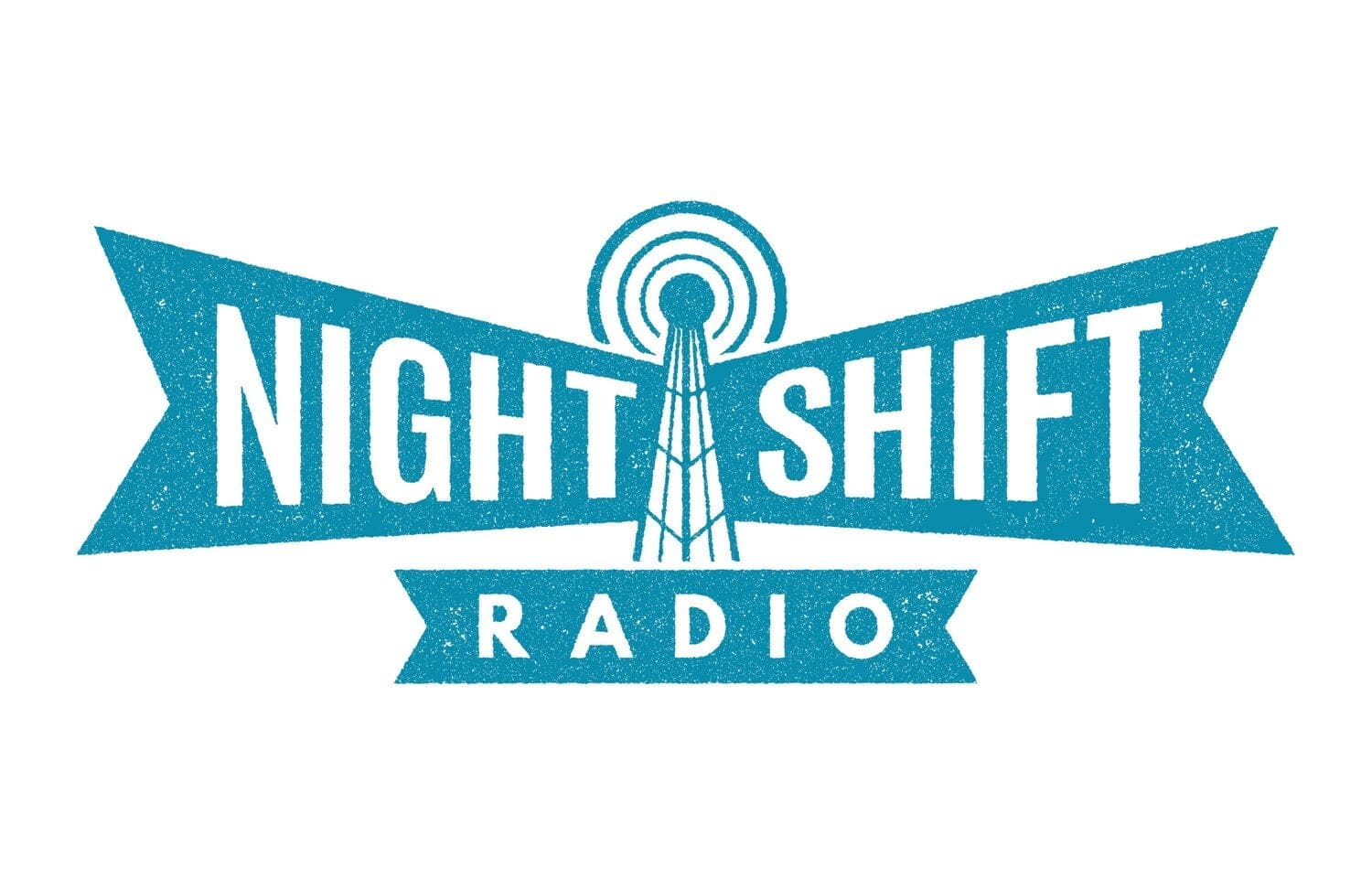

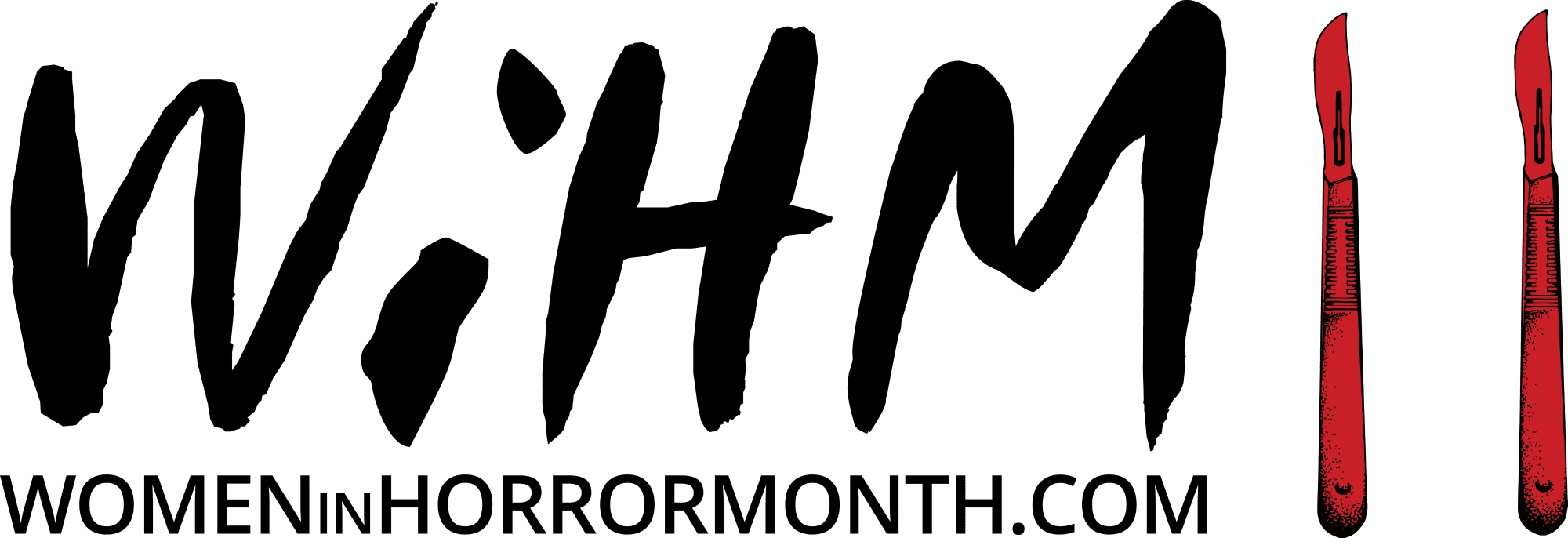
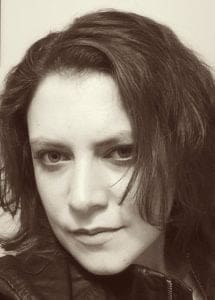
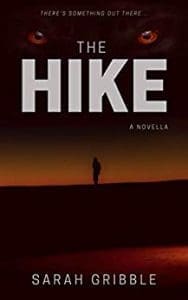
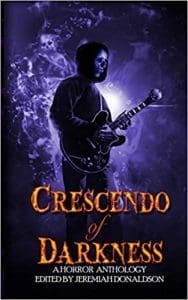
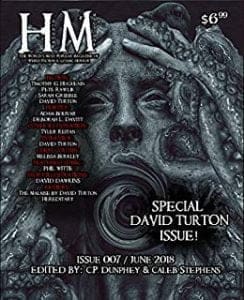
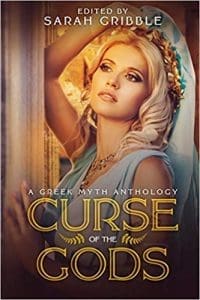

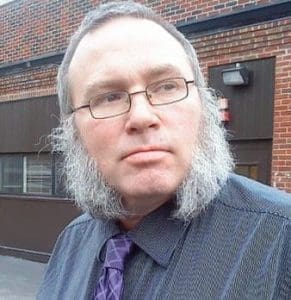 Selene – Welcome to The Horror Tree, and thanks for agreeing to an interview. Tell us a bit about yourself, namely what is New Wave (horror)? I’m familiar with “new wave” in other contexts (New Wave music of the 80s, French New Wave film, New Wave Of British Heavy Metal…), but not pertaining to horror.
Selene – Welcome to The Horror Tree, and thanks for agreeing to an interview. Tell us a bit about yourself, namely what is New Wave (horror)? I’m familiar with “new wave” in other contexts (New Wave music of the 80s, French New Wave film, New Wave Of British Heavy Metal…), but not pertaining to horror.  Selene – I read the first novel in the series, Catskinner’s Book. You’ve created a unique world and situation; how do you go about world-building?
Selene – I read the first novel in the series, Catskinner’s Book. You’ve created a unique world and situation; how do you go about world-building?  Misha – I think I’d go with “Black Dog” from Duel Visions, and I’d like to get David Morse to play the lead.
Misha – I think I’d go with “Black Dog” from Duel Visions, and I’d like to get David Morse to play the lead. Selene – Welcome to The Horror Tree, and thank you for agreeing to “chat” with us today! First, tell us a bit about yourself.
Selene – Welcome to The Horror Tree, and thank you for agreeing to “chat” with us today! First, tell us a bit about yourself. 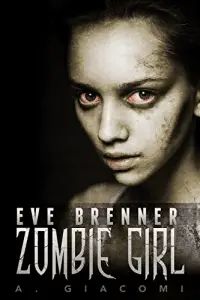 A.G. – Zombie Girl was my first step into professional writing, it was my baby and I will always treasure it. The four-book saga was a labor of love and most readers I’ve interacted with have told me that it was hard to put down and that they found parts of it so very relatable. I wanted to create a zombie story like no other and I feel as though I really achieved that. The story follows Eve, a teen from a small town looking to escape and find a little adventure, she definitely gets more than she bargained for, and, as her character develops, we find out just how strong she truly is. I’m a big fan of comic books and I’ve always wanted to design a hero. Eve is a hero, a perfectly flawed one. I loved creating her, but her story is now complete. I’m happy with the ending and don’t want to spoil it. I’m currently working on a new series that will centre around the haunting of a small town, I don’t want to say too much about it, but it’s quirky and weirdly wonderful and it’s really hard to leave that world behind when I stop writing.
A.G. – Zombie Girl was my first step into professional writing, it was my baby and I will always treasure it. The four-book saga was a labor of love and most readers I’ve interacted with have told me that it was hard to put down and that they found parts of it so very relatable. I wanted to create a zombie story like no other and I feel as though I really achieved that. The story follows Eve, a teen from a small town looking to escape and find a little adventure, she definitely gets more than she bargained for, and, as her character develops, we find out just how strong she truly is. I’m a big fan of comic books and I’ve always wanted to design a hero. Eve is a hero, a perfectly flawed one. I loved creating her, but her story is now complete. I’m happy with the ending and don’t want to spoil it. I’m currently working on a new series that will centre around the haunting of a small town, I don’t want to say too much about it, but it’s quirky and weirdly wonderful and it’s really hard to leave that world behind when I stop writing.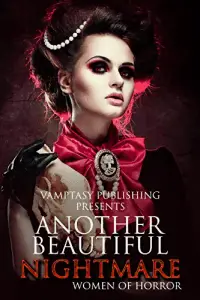 Selene – I was amused to find your story, “Aqua Vita”, from Another Beautiful Nightmare, was set in Ottawa. As a Canadian, I like to set my stories in Canada (and not just because I’m lazy). How do you choose your settings?
Selene – I was amused to find your story, “Aqua Vita”, from Another Beautiful Nightmare, was set in Ottawa. As a Canadian, I like to set my stories in Canada (and not just because I’m lazy). How do you choose your settings? 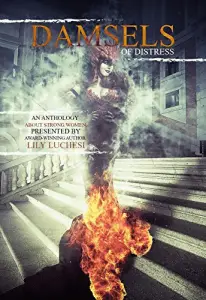 Selene – Your poem “Queen of Corpses” from the Damsels Of Distress anthology is a reworking of Shakespeare’s play King Lear, with a focus on Cordelia. What inspired this poem, and why do you think authors like to rework old properties (Shakespeare, myths, fairy tales, etc.)? And speaking of Cordelia, as a Canadian did the Tragically Hip song have even a tiny bit to do with it?
Selene – Your poem “Queen of Corpses” from the Damsels Of Distress anthology is a reworking of Shakespeare’s play King Lear, with a focus on Cordelia. What inspired this poem, and why do you think authors like to rework old properties (Shakespeare, myths, fairy tales, etc.)? And speaking of Cordelia, as a Canadian did the Tragically Hip song have even a tiny bit to do with it? 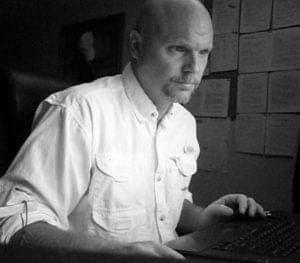 Selene – Welcome to The Horror Tree, and thanks for taking the time to answer some questions! First, tell us a bit about yourself.
Selene – Welcome to The Horror Tree, and thanks for taking the time to answer some questions! First, tell us a bit about yourself. 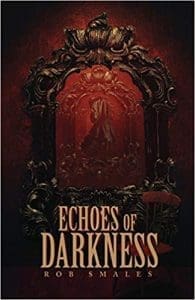 Rob –
Rob – 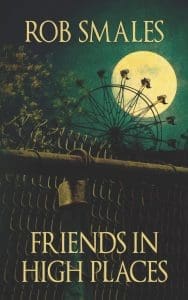 Selene – Let’s talk about your novella,
Selene – Let’s talk about your novella, 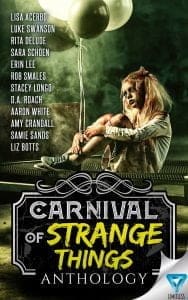 Okay, real quick: if you’re a fan of the carnival theme, Limitless Publishing’s releasing the third book in their Creepiest Show on Earth anthology series in May. Available for preorder on the 4th and releasing on the 14th, it’s called Carnival of Strange Things, and somewhere in that little collection of oddities you’ll find my rather long short story, “The Fate Machine.” Check it out—it’s a fun series.
Okay, real quick: if you’re a fan of the carnival theme, Limitless Publishing’s releasing the third book in their Creepiest Show on Earth anthology series in May. Available for preorder on the 4th and releasing on the 14th, it’s called Carnival of Strange Things, and somewhere in that little collection of oddities you’ll find my rather long short story, “The Fate Machine.” Check it out—it’s a fun series. Selene – Welcome to The Horror Tree, and thank you for agreeing to an interview. First off, tell us a bit about yourself.
Selene – Welcome to The Horror Tree, and thank you for agreeing to an interview. First off, tell us a bit about yourself.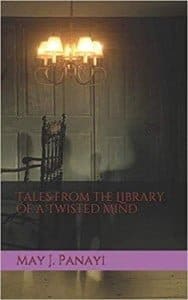 Selene – More specifically, what about writing horror draws you?
Selene – More specifically, what about writing horror draws you? 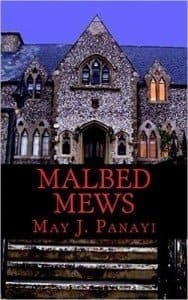 Selene – You mostly self-publish, but have published with some magazines and more “traditional” places. What do you like about each means of publishing?
Selene – You mostly self-publish, but have published with some magazines and more “traditional” places. What do you like about each means of publishing? 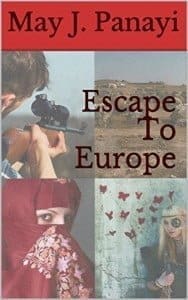 Selene – Your book Escape to Europe examines the lives of people dealing with the realities of the refugee crisis in Europe, along with Brexit and other current hot-button political topics. Not to get into too much of a political debate, but what do you think of politics in stories? Do they belong, or is it better to fictionalize ideas so the story will remain more “timeless?”
Selene – Your book Escape to Europe examines the lives of people dealing with the realities of the refugee crisis in Europe, along with Brexit and other current hot-button political topics. Not to get into too much of a political debate, but what do you think of politics in stories? Do they belong, or is it better to fictionalize ideas so the story will remain more “timeless?”  May – I love photographing architecture and graveyards. My partner is all about the wildlife photography and filming, but I prefer things that keep still, while I decide on a context to best frame their beauty. I like landscapes too.
May – I love photographing architecture and graveyards. My partner is all about the wildlife photography and filming, but I prefer things that keep still, while I decide on a context to best frame their beauty. I like landscapes too. Selene – Welcome to The Horror Tree, and thanks for agreeing to this interview. First, tell us a bit about yourself.
Selene – Welcome to The Horror Tree, and thanks for agreeing to this interview. First, tell us a bit about yourself. 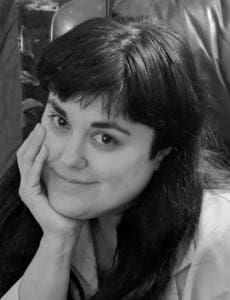 Selene – Welcome to The Horror Tree, and thank you for agreeing to an interview today. First, tell us about yourself.
Selene – Welcome to The Horror Tree, and thank you for agreeing to an interview today. First, tell us about yourself.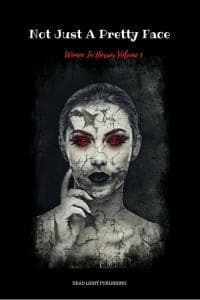 Selene – February is Women in Horror Month, and you and I have something in common: Not Just a Pretty Face, DeadLight Publishing’s upcoming anthology of women-authored horror stories. Let’s talk about your story, “War Beads.”
Selene – February is Women in Horror Month, and you and I have something in common: Not Just a Pretty Face, DeadLight Publishing’s upcoming anthology of women-authored horror stories. Let’s talk about your story, “War Beads.” Selene – In researching some of your work, I read your story “Audition,” in Crescendo of Darkness, which I loved. Great story—so great, in fact, I went looking to see if Ezra’s a real person! How do you create realistic characters?
Selene – In researching some of your work, I read your story “Audition,” in Crescendo of Darkness, which I loved. Great story—so great, in fact, I went looking to see if Ezra’s a real person! How do you create realistic characters? 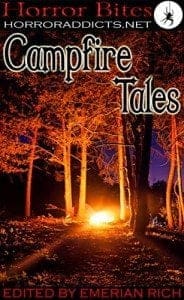 Selene – The other story of yours that I was able to read was “The Face,” from Horror Addicts’ Campfire Tales anthology. I found it both suspenseful and kind of hilarious, but the quality I enjoyed most about it, as a “campfire story,” was that cautionary/urban legend/fable storytelling. It was fun picturing a narrator telling the story around a campfire, and the “audience” reacting. How do you create this kind of story, and are “fable”/campfire type stories favourites of yours?
Selene – The other story of yours that I was able to read was “The Face,” from Horror Addicts’ Campfire Tales anthology. I found it both suspenseful and kind of hilarious, but the quality I enjoyed most about it, as a “campfire story,” was that cautionary/urban legend/fable storytelling. It was fun picturing a narrator telling the story around a campfire, and the “audience” reacting. How do you create this kind of story, and are “fable”/campfire type stories favourites of yours? 